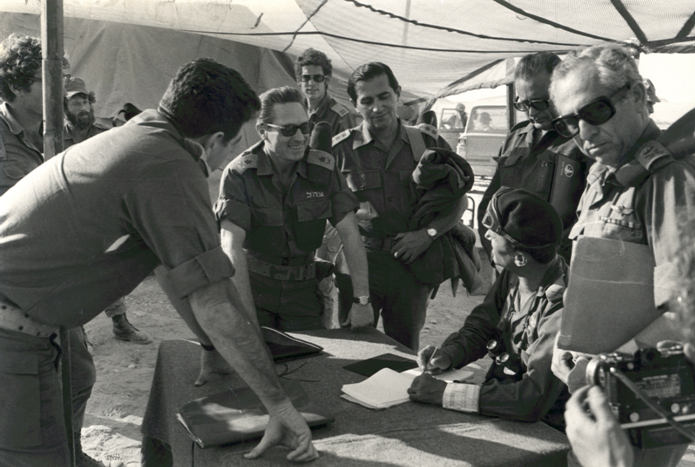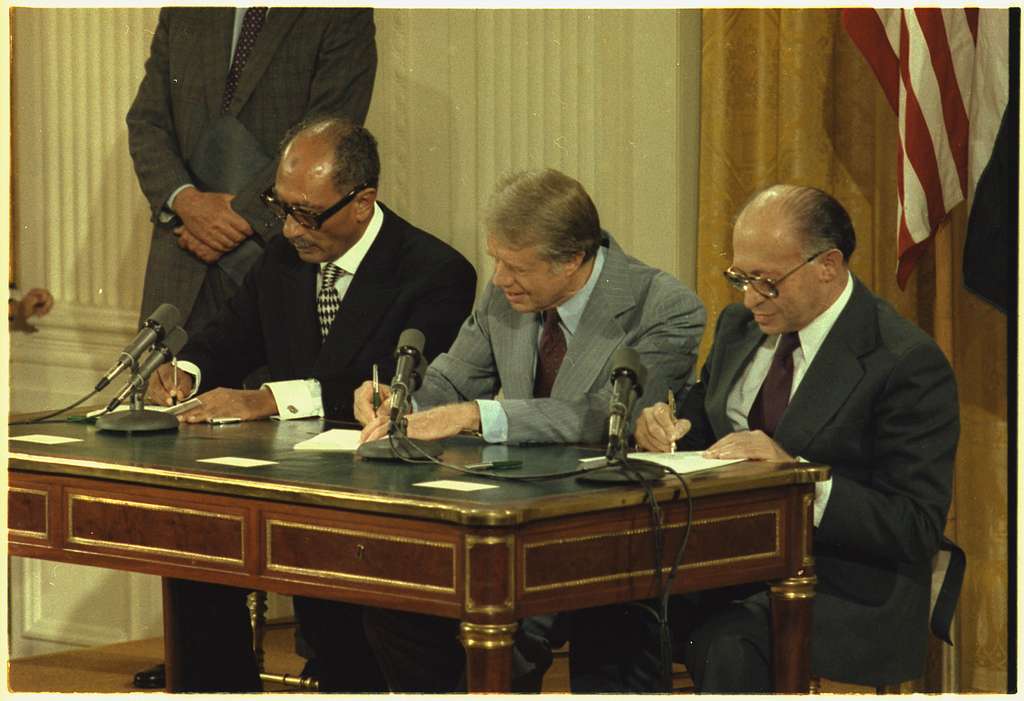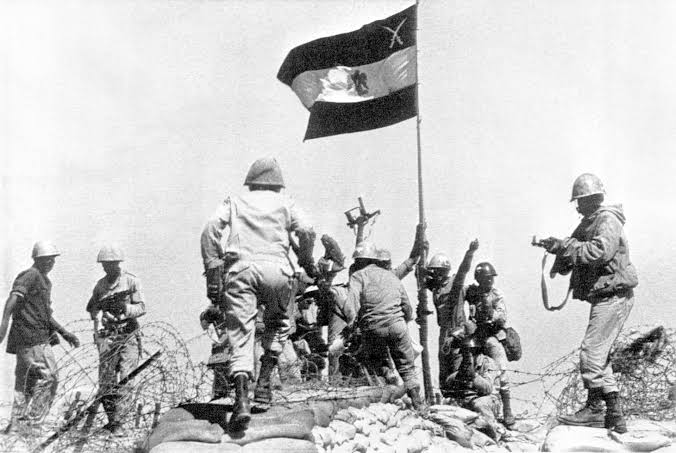The 6th of October War, also known as the Yom Kippur War or the October War, was a important conflict that took place in 1973 between Israel and its neighboring nations, Syria and Egypt.
The October War has had a profound impact on Egyptian culture over the years, becoming the subject of numerous films, books, and songs. On the 6th of October, it is particularly common for social media feeds to flood with black-and-white images of the war, and for it to be commemorated through films specifically curated for the occasion on national television. Its legacy subsequently continues to influence Egyptians’ patriotism and national unity.
This year, as Egypt celebrates the memorable event with a long weekend, it marks 50 years since the war transpired.
Lasting nearly three weeks, the war marked a pivotal point in the history of the Middle East, leaving a long lasting impact on the involved countries, which were directly or directly uninvolved, and the MENA region as a whole.
CAUSE OF THE WAR
The underlying causes of the war can be traced back to the ongoing tensions between Israel and its Arab neighbors since the creation of the Jewish state in 1948. A massive point of contention that is at the root of socio-political tensions until today, with many Palestinian territories still undergoing annexation, the creation of the Israeli state was deemed an irreversible catastrophe for the Middle East’s largely Arab and Muslim nations, orchestrated by Western forces such as the United Kingdom.
The ideology of late 19th-century European colonialism, which denied the rights of indigenous Palestinians and viewed them as landless people, is the foundation of Israel’s current regime over Palestinians. In 1948, Israel carried out a mass expulsion of indigenous Palestinians to establish the state of Israel. This event is known to Palestinians as al-Nakba, or the Catastrophe.
Previously, in 1948, Egypt’s King Farouk led the first Arab-Israeli war, ultimately failing to expel the Israelis from once-Palestinian land. In 1956, Egypt faced tripartite aggression from Israel, England, and France over Nasser’s nationalization of the Suez Canal.
Egypt and Israel subsequently fought in the Six-Day War (1967) when a decade’s worth of political tension reached a boiling point. Egypt, led by President Gamal Abdel Nasser, and Syria, under the leadership of President Hafez al-Assad, sought to regain control over territories lost to Israel during the Six-Day War in 1967. The objective was to reverse the military gains made by Israel and establish their dominance in the region.
While there was minor combat in northern Israel and Egypt’s northern African territory, most of the fighting between the two sides occurred in the Sinai Peninsula and the Golan Heights, both of which were conquered by Israel in 1967.
ON THE OFFENSIVE
On the 6th of October 1973, the Egyptian and Syrian forces launched a surprise attack on Israel, particularly in the Sinai Peninsula and the Golan Heights. The timing of the attack was strategic, as it coincided with the Jewish holiday of Yom Kippur, a day when Israel’s security forces were thin and doubtful of an attack.
The initial days of the war saw significant territorial gains for Egypt and Syria, catching Israel off-guard. The Egyptian army attacked Israeli air bases and command posts; namely, it crossed the Suez Canal, breaching the heavily fortified Bar Lev Line, and advanced into Sinai.
Meanwhile, Syria made considerable advances on the Golan Heights, threatening Israel’s northern border. The war quickly escalated, and both sides suffered heavy casualties. Egypt alone was estimated to have lost up to an estimated 15,000 killed and others taken prisoner while Israel suffered casualties at around 2,500 killed and 7,500 wounded.

However, Israel managed a counteroffensive, primarily due to its military capabilities and support from the United States. Israeli forces pushed back the Egyptian army forces across the Sinai Peninsula and eventually forced Egypt to accept a ceasefire. Similarly, Israeli forces successfully repelled Syrian advances on the Golan Heights and ultimately regained control of the territory.

The student movement in Egypt, which had been brewing since Egypt’s defeat in the 1967 war, intensified under subsequent President Anwar El Sadat’s leadership (1970-1981). It had begun with university students demanding accountability from the state for the outcomes of the 1967 war.
Against the context of these local pressures, President Sadat sought to leverage the United States’ power over Israel to regain Egyptian and Arab territories. However, when the Americans showed little interest, he decided to refocus his attention on the region through a “limited war” to get the US’s attention, according to Egyptian journalist Mohamed Hassanein Heikal.
More significantly, the war provided opportunities for diplomacy, which led to President Sadat’s infamous visit to Jerusalem and the Egypt-Israel peace treaty in 1979. In 1982, after Israel’s phased withdrawal from Sinai, Egypt’s flag finally flew over the peninsula. This was a momentous occasion for Egyptians, who had been fighting to regain control of Sinai since the Six-Day War in 1967.
A REVOLUTIONARY AFTERMATH
The 6th of October War had several far-reaching consequences.
Firstly, it shattered the myth of Israeli invincibility, established after its swift victory in the Six-Day War. The suddenness and intensity of the Arab attack caught Israel off-guard, highlighting the need for improved military preparedness and intelligence gathering.
Secondly, the war strained relations between the involved countries and brought international attention to the conflict. The United States and the Soviet Union, both major powers during the Cold War, were drawn into the war as they supported their respective allies. This further heightened tensions in the region and contributed to a more complex geopolitical landscape. It also threw the world into a potential nuclear threat, with both powers threatening to exert a nuclear confrontation.
Furthermore, the war paved the way for diplomatic negotiations between Israel, Egypt, and eventually, Syria. The peace process initiated in the aftermath of the war led to the signing of the Camp David Accords in 1978 between Israel and Egypt, resulting in the return of the Sinai Peninsula to Egypt and the establishment of diplomatic relations.

Credit: National Archives and Records Administration
Lastly, despite the losses from both the Egyptian and Syrian sides, the 6th of October War also had significant repecussions on the Arab world. It provided a renewed sense of pride to Arab nations, who saw the war as a partial victory against Israel.
Subscribe to the Egyptian Streets’ weekly newsletter! Catch up on the latest news, arts & culture headlines, exclusive features, and more stories that matter, delivered straight to your inbox by clicking here.







Comments (3)
[…] October 1973 Warfare, identified in Egypt because the October Victory, marked a defining second in Egypt’s nationwide historical past, as Egyptian forces crossed the Suez […]
[…] of launching a surprise attack in 1973 to take back the Sinai Peninsula. This October marked the fiftieth anniversary of the conflict, known in Israel and the West as the Yom Kippur War, with various events and […]